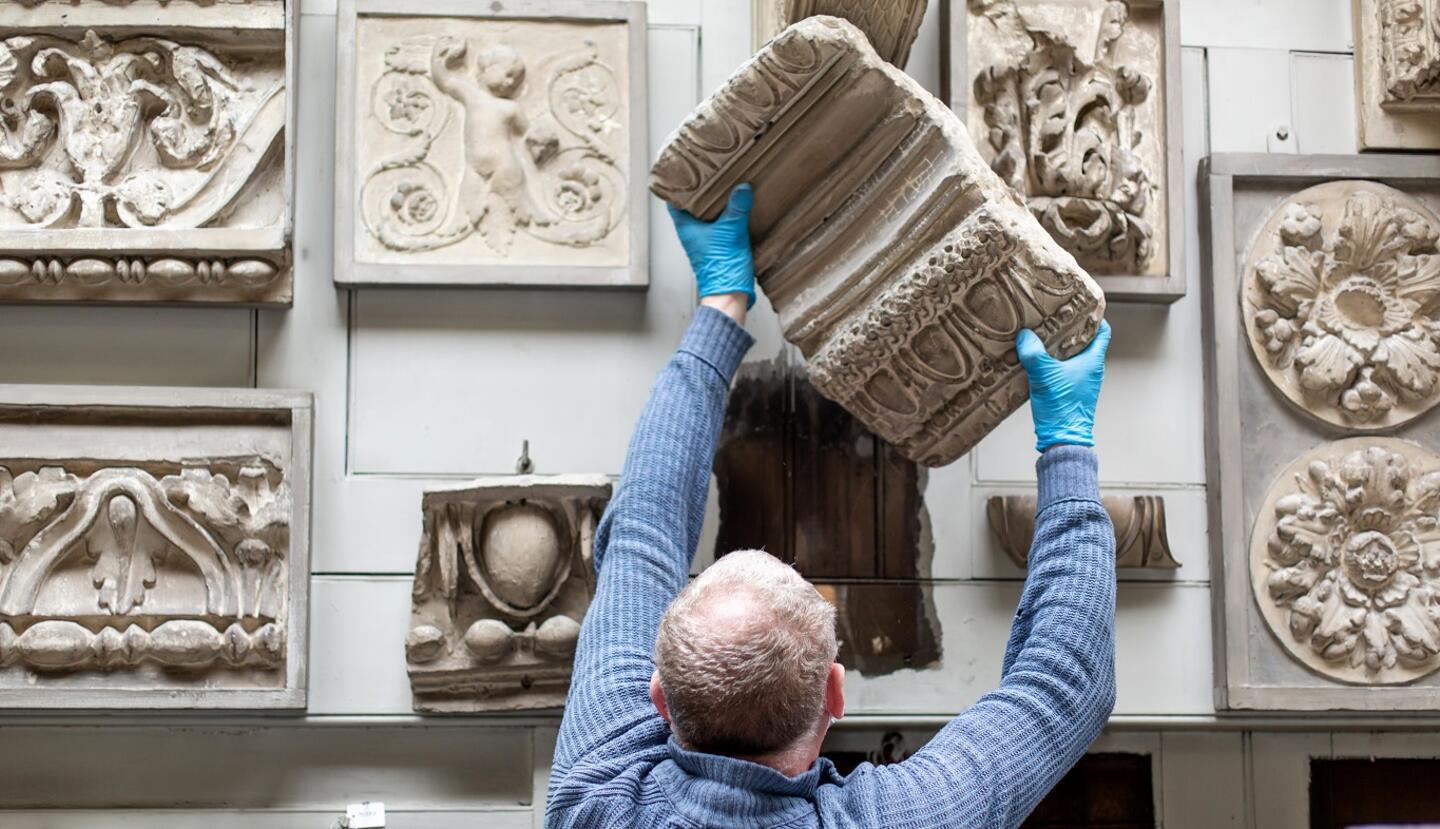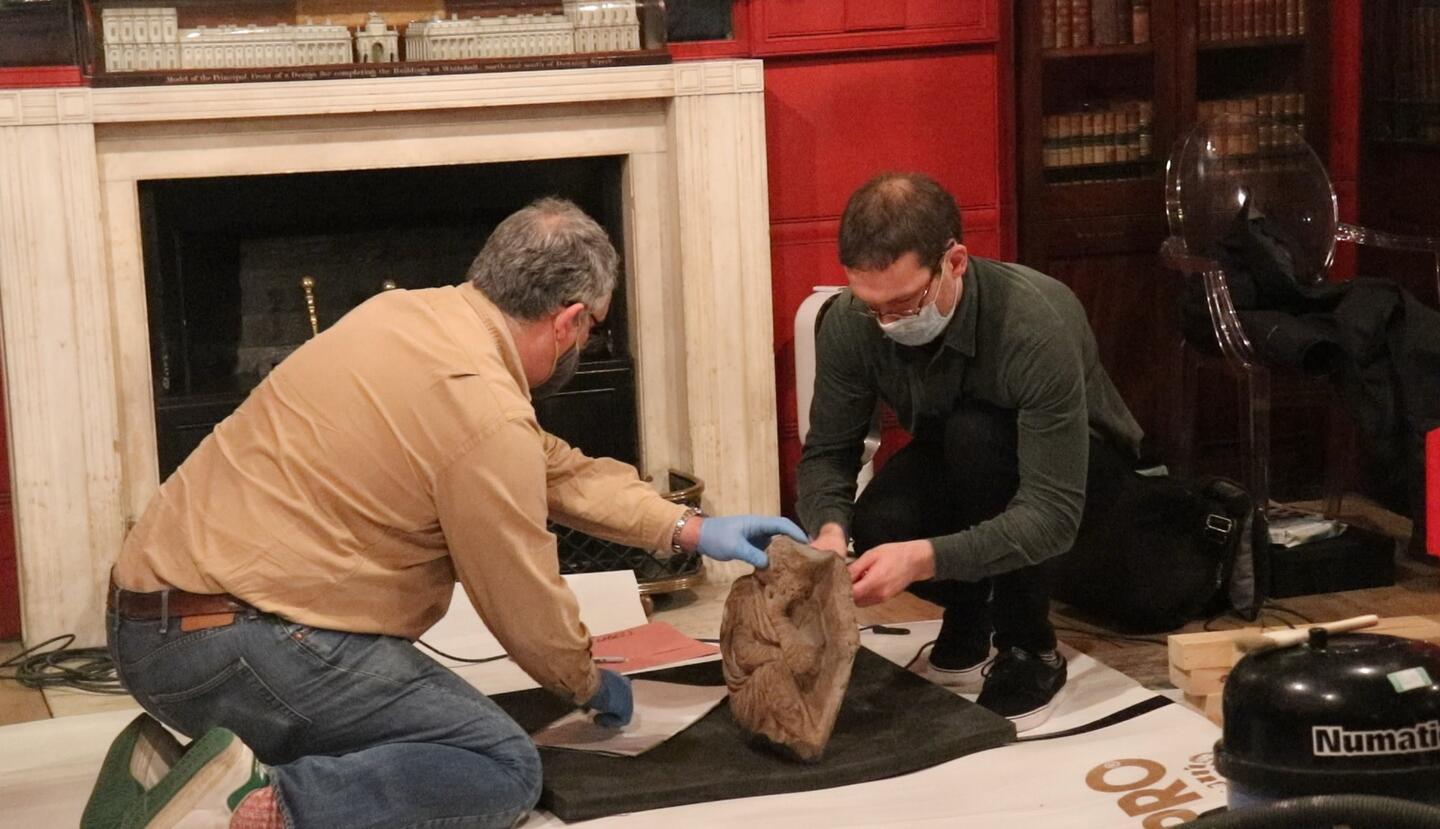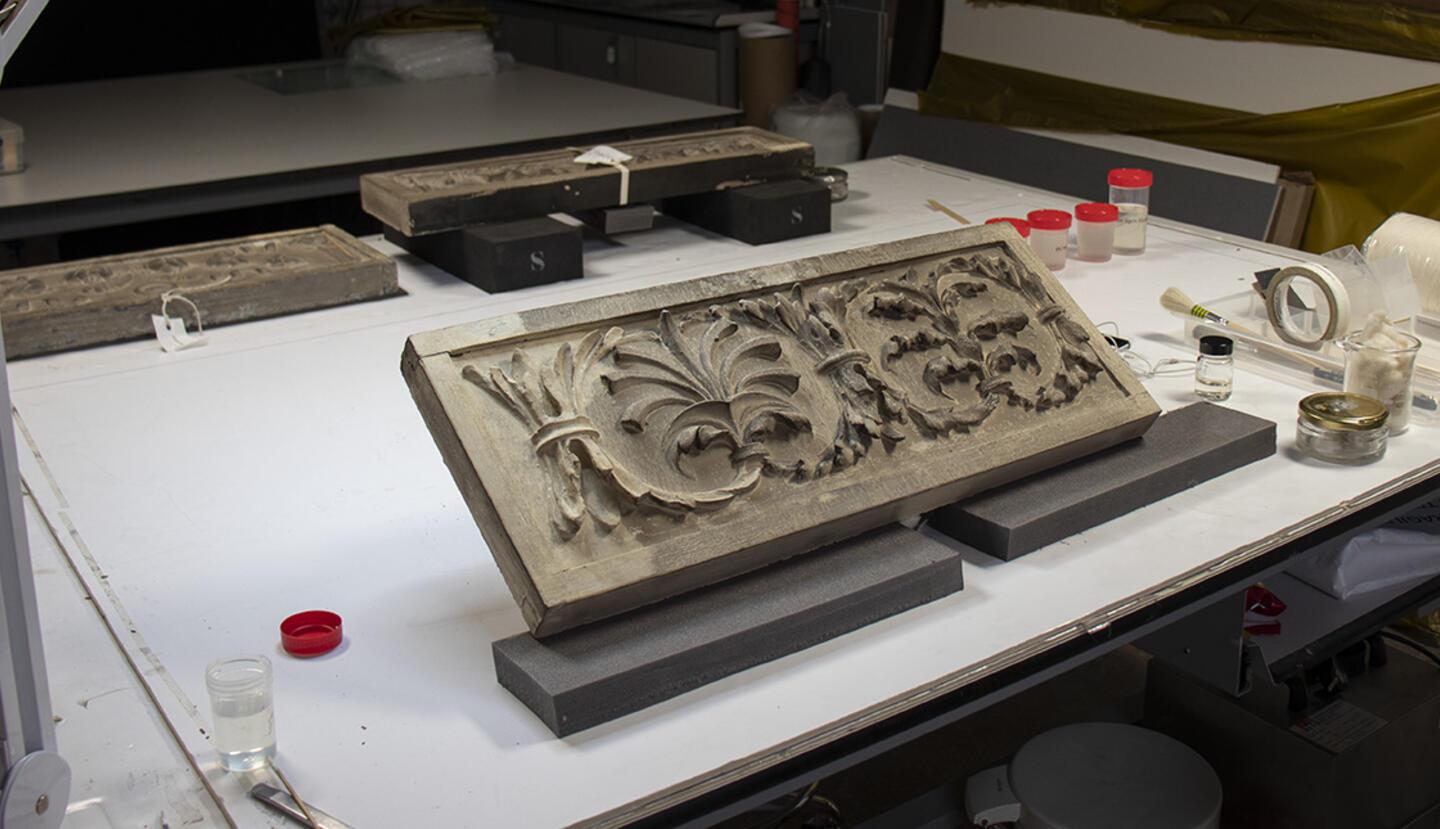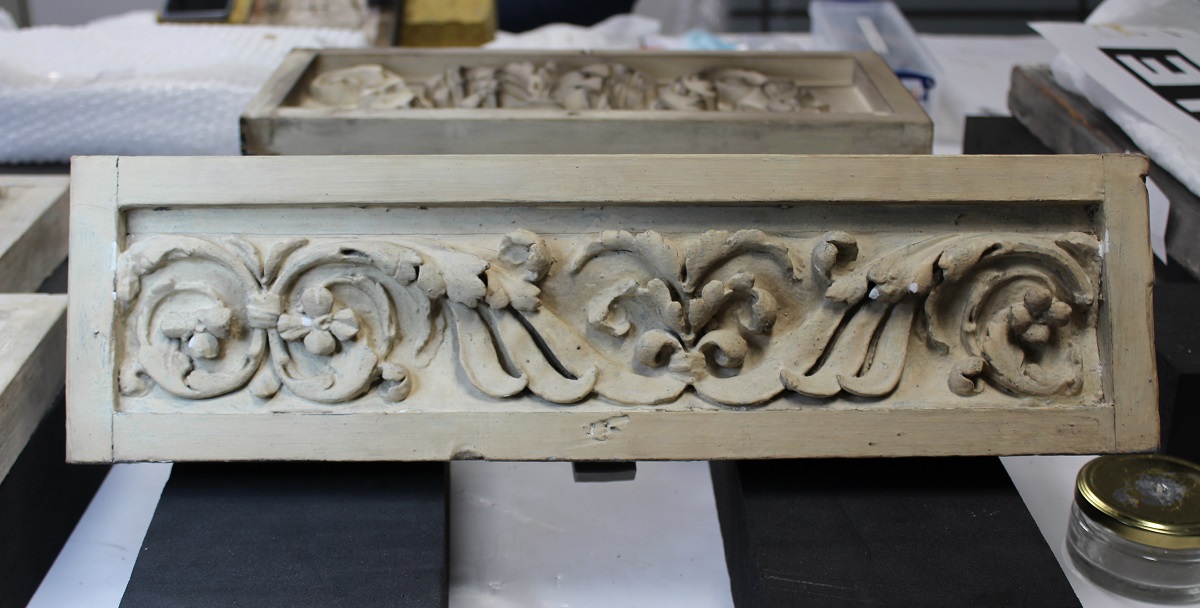Words by Jane Wilkinson, Head of Conservation
The Drawing Office is hung with over 250 objects, mostly plaster casts. Because the room has never been on the visitor route and the walls are very inaccessible, these works have had little attention over the last fifty years. With this project, we had a fantastic opportunity to finally assess and treat them.





